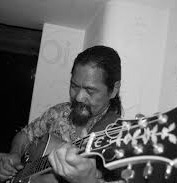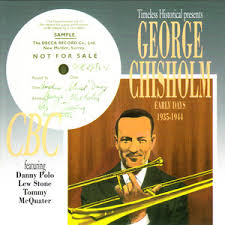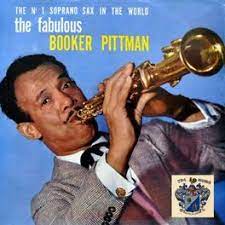
Daily Dose Of Jazz…
Edgar Avenir was born on May 25, 1950 in Diliman, Quezon City, Philippines. As a child he grew up in the University of the Philippines and lived in Area One of the campus. As a young guitarist, Avenir played with the renowned jazz pianist and composer Bong Peñera, and the Sangkatutak Band, whose members included Cariño, Ivy Violan and Richard Merk. His neighbors included Ed “Sarge” Cariño and John Lesaca, both of whom would later play with Avenir in various bands.
While he sessioned for pop acts like the Apo Hiking Society, his associations with fellow jazz musicians allowed him to explore the more eclectic side of his music. His move to jazz had him rubbing shoulders and exchanging notes with Pinoy jazzmen like Sandra Lim Viray, Jun Viray, Romy Posadas and Roger Herrera.
An excellent musician who could play with anyone, Avenir regularly performed with singer Zenaida Celdran and De la Calzada at La Cuisine Francaise in Makati. Celdran took care of Avenir in the last few months of his life. He was always willing to help fellow artists who wanted to learn more about music.
Still playing until August even though he was ill, guitarist Edgar Avenir, affectionately known as Koyang, died on Saturday, September 17, 2017 of pneumonia arising from lung cancer. He was 61.
More Posts: guitar,history,instrumental,jazz,music

Daily Dose Of Jazz…
Nikki Anne Iles was born Nikki Anne Burnham on May 16, 1963 in Dunstable, Bedfordshire, England. Her primary school musical education began when she learned to play the harmonica and the clarinet. At eleven she won a junior exhibition at the Royal Academy of Music, where she studied clarinet and piano from 1974 to 1981. She became a member of the Bedfordshire Youth Jazz Orchestra before going to the Leeds College of Music from 1981 to 1984.
Settling in Yorkshire after graduating from the Leeds College of Music, she married trumpeter Richard Iles and took his name. She joined his band Emanon, with which she played some of her compositions. Iles began playing with several London-based bands, led by Steve Argüelles, Mick Hutton and Stan Sulzmann.
Iles won the 1996 John Dankworth Special Award at the BT Jazz Festival, but following a serious car crash after a gig, she opted to settle in London, England. She went on to be a senior lecturer at Middlesex University, and taught at the University of York, Leeds College of Music, the Guildhall School of Music, and in Bulgaria, Holland, France, and Finland.
Composer, pianist and educator Nikki Iles, who was awarded the British Empire Medal (BEM) at the 2022 New Year Honours for services to music, continues her career as a composer, educator and musician.
More Posts: bandleader,composer,educator,history,instrumental,jazz,music,piano

Daily Dose Of Jazz…
George Chisholm was born on March 29, 1915 in Glasgow, Scotland and at the age of fifteen in the late 1930s he moved to London, where he played in dance bands led by Bert Ambrose and Teddy Joyce. He later recorded with jazz musicians such as Coleman Hawkins, Fats Waller and Benny Carter during their visits to the UK.
During the Second World War, he signed on with the Royal Air Force and joined the RAF Dance Orchestra, known popularly as the Squadronaires, remaining in the band long after he was demobbed. George followed this with freelance work and a five-year stint with the BBC Showband, the forerunner of the BBC Radio Orchestra. As a core member of Wally Stott’s orchestra on BBC Radio’s The Goon Show, he made several minor acting appearances.
He had roles in the films The Mouse on the Moon, The Knack …and How to Get It and Superman III. He was part of the house band for the children’s programs Play School and Play Away. He also sang and was a storyteller on Play School occasionally.
During the 1980s despite undergoing heart surgery, Chisholm continued to play, working with his own band the Gentlemen of Jazz and Keith Smith’s Hefty Jazz among others, and playing live with touring artists.
By the mid-1990s he retired from public life suffering from Alzheimer’s disease. Trombonist and vocalist George Chisholm, who was appointed as an Officer of the British Empire (OBE), died on December 6, 1997 at the age of 82.

Daily Dose Of Jazz…
Herb Bushler was born on March 7, 1939 in New York City and played piano and tuba in his youth before picking up double bass. Classically trained in bass he has performed with symphony orchestras in this capacity.
In 1966 he began a longtime association with ballet and film composer Coleridge-Taylor Perkinson. Herb played with The Fifth Dimension in the 1960s. He worked extensively in jazz idioms in the 1960s and 1970s, including with David Amram, Ted Curson, Blossom Dearie, Tony Williams, and Paul Winter.
He first played with Gil Evans in 1967 and the association would continue on and off until 1981. During the 1970s Bushler recorded sessions with Enrico Rava, Joe Farrell, Ryo Kawasaki, David Sanborn and Harold Vick. He also worked with Dee Dee Bridgewater, Billy Harper, Les McCann, Enrico Rava, Joe Chambers, and Howard Johnson.
Bassist Herb Bushler, whose composition Herbs was recorded by David Sanborn, at 85 years old continues to occasionally play both double bass and electric bass.

Daily Dose Of Jazz…
Booker Pittman was born on March 3, 1909 in Fairmount Heights, Maryland, was the son of Portia Pittman and a grandson of Booker T. Washington. He became an accomplished jazz clarinetist and played with greats like Louis Armstrong and Count Basie in the US and Europe in the 1920s and 1930s.
Leaving the States for the first time in 1933, he went with Lucky Millinder’s orchestra to France and stayed there for four years. During that period, he met a Brazilian musician named Romeo Silva, who took him on a tour of Brazil along with other musicians. They sailed to Bahia aboard the Siqueira Campos.
In 1937, Booker moved to Brazil, where he was known by the nickname “Buca“, and continued his musical career there, playing at the Urca Casino. He lived in Copacabana and befriended Jorge Guinle and Pixinguinha. He also played in Argentina and other countries.
He performed and recorded with his singer/actress stepdaughter Eliana Pittman. On October 19, 1969 clarinetist and saxophonist Booker Pittman, sometimes spelled Pitman, transitioned in his home in the São Paulo quarter of Vila Nova Conceição of laryngeal cancer at the age of 60. On behest of his wife Ofélia he was transferred to Rio de Janeiro and there laid to rest at the Cemitério São João Batista in the quarter of Botafogo.
More Posts: clarinet,history,instrumental,jazz,music,saxophone




